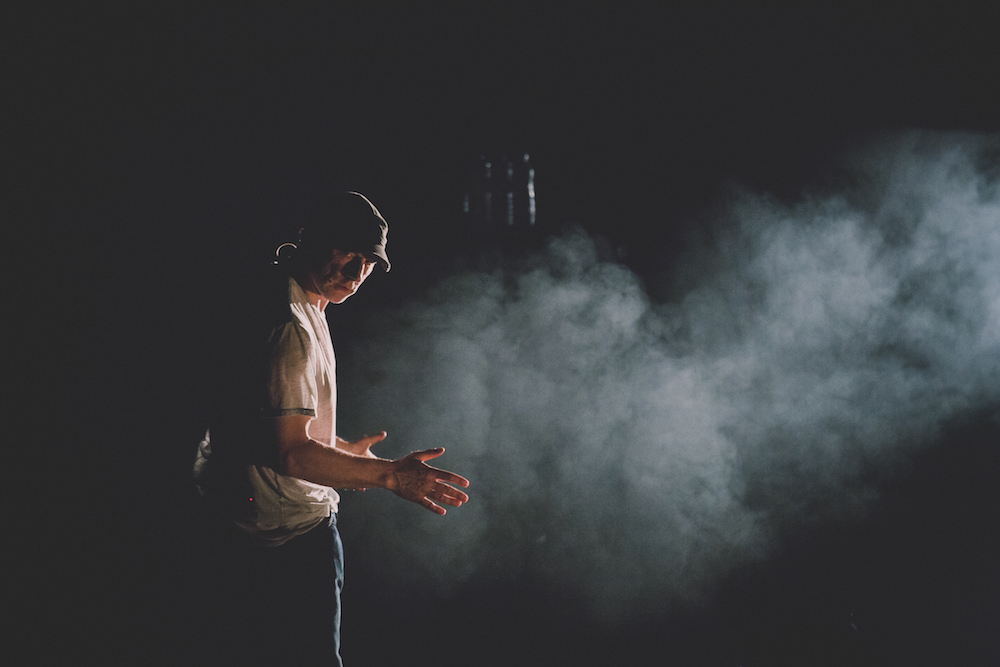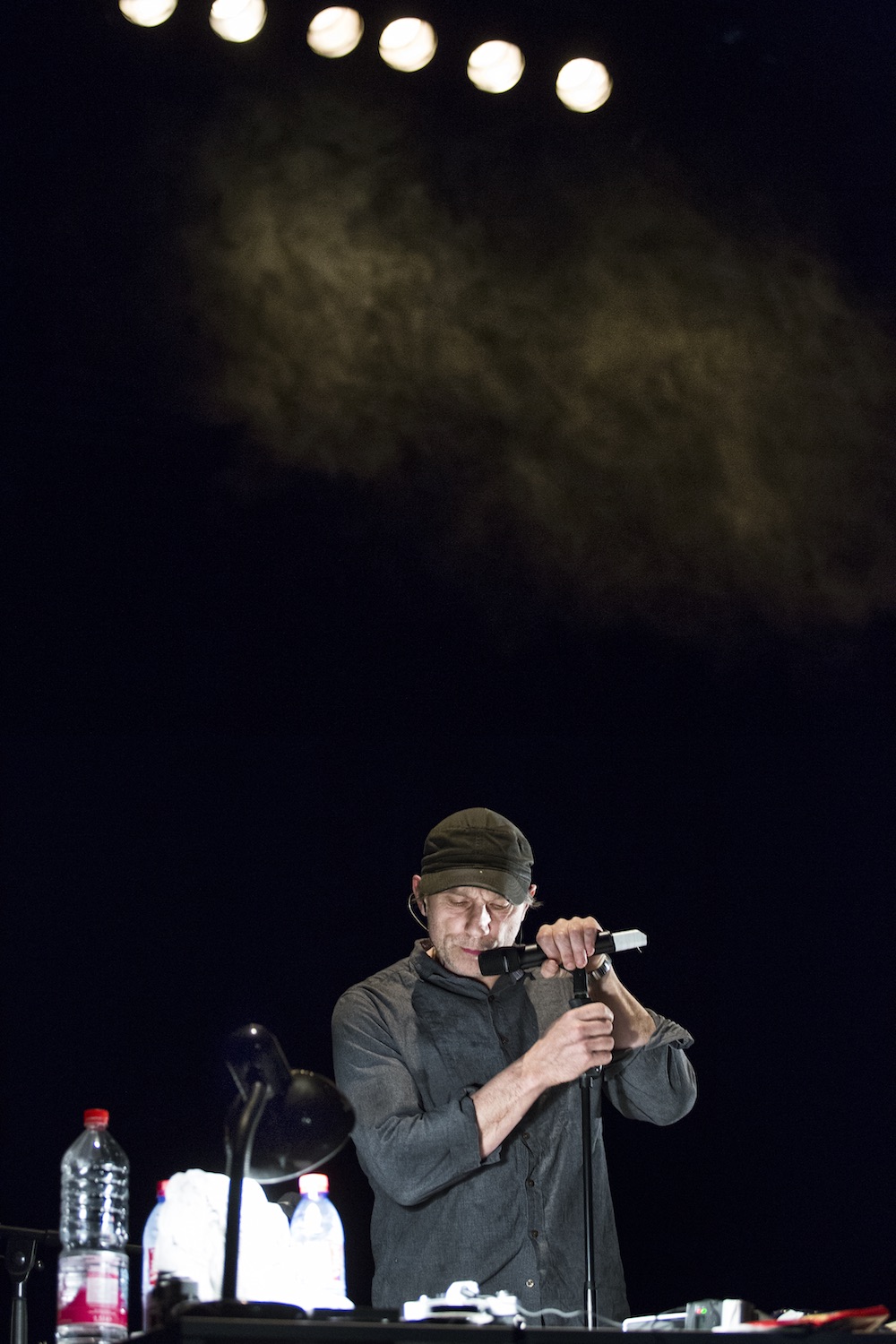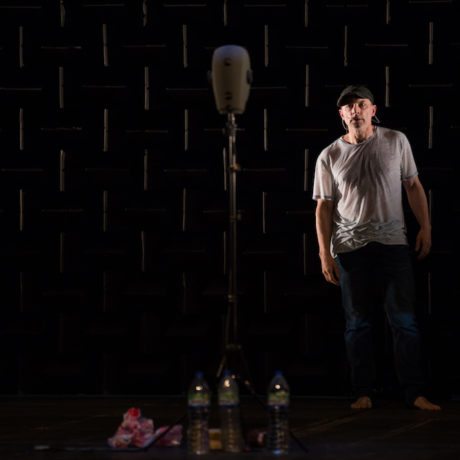
© Stavros Petropoulos
For Complicité’s The Encounter, the vast stage of the Barbican Centre theatre is almost bare, aside from clusters of plastic water bottles, a sphinx-like head on a stick—like a mysterious twenty-first-century totem—and, promisingly, an echoing chamber of speakers cladding the entire back wall. Before anything can happen the audience must check that their headphones are working: this is a show about sound. It is also, director and sole performer Simon McBurney explains in a prelude, as he playfully deconstructs the trickery of acting along with that of the headphones’ binaural sound system (which allows sound to envelop the listener’s head immersively), about mistaking fiction for reality, about memory and storytelling, and a story, he declares, is really about listening.
“Before anything can happen the audience must check that their headphones are working: this is a show about sound”
This is The Encounter’s return to the stage after its first production in 2016. It was adapted from the novel Amazon Beaming by Petru Popescu, itself inspired by the life-changing experience of American National Geographic photographer Loren McIntyre, who in 1969 found himself lost among the Mayoruna people of the remote Javari Valley in Brazil. In order to capture and transmit to the audience McIntyre’s dislocating, soul-shattering journey, complete with shamanic rituals, hallucinogenic frog licking and telepathy, the show was devised as an immersive technological experience, with design by Michael Levine, sound by Gareth Fry and Pete Malkin, lighting by Paul Anderson and projection by Will Duke. In its lyrical contemplation of existential themes and experimental use of stage design The Encounter is continuous with previous Complicité shows such as Mnemonic (1999), which wove together the hunt for a missing woman and the discovery of a 5,000-year-old Iceman corpse to question the role of imagination in recapturing the past, or A Disappearing Number (2007), inspired by the 1910s collaboration between mathematicians Srinivasa Ramanujan from India and Cambridge
don GH Hardy. Here the focus is on the shifting nature of time and consciousness, which McIntyre discovers among the Mayoruna.

Fleeing the encroachment of industrialization, the tribe is determined to go back to “the beginning” (pre-Colombian times) by ridding themselves of all possessions in a hallucinatory bonfire of the vanities. The parallel between McIntyre’s experience of thought transmission with the tribe’s headman and the audience’s experience with the sound system is beguiling. There is no denying that virtuoso McBurney, a charismatic and physical performer who plays both himself and McIntyre, manages to animate the suggestive sound story we hear—an incantatory mix of his own live voice and many other recorded ones—in a way that is at once as intimate as listening to a bedtime story and as trippy as being in the midst of a rave. There are memorable images: what McIntyre at first mistakes for a black vine creeper turns out to be a tumble of film hanging from his disembowelled camera; what looks like an electric cable is in fact a moving column of soldier ants. But there are serious problems with the show: at two hours without interval it is far too long not to feel somewhat purgatorial; the shifting, fragmented nature of the narrative makes it difficult to feel much empathy with McIntyre, and some of the messages beamed into our headphones—about the evils of American consumerism, the tragedy of Brexit, the vanity of modern civilization—might feel a trifle condescending. A case of impressive design and not enough actual story.
Elephant Rating: 🐘🐘🐘 (3/5)
The Encounter
Until 5 May at the Barbican, London, subsequent tours to Antwerp, Berlin and Moscow
VISIT WESITE





